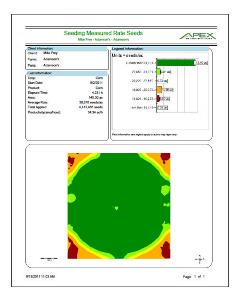Mega Menu
Mega menu is possible in BS5 but we will need to create a custom template layout for the navigation widget. The following is a hard-coded example.

Font Awesome 6
FA6+ icons will work on all widgets.
The FMH Icon box will need a new version created because the styling is broken in Bootstrap 5 templates (this has nothing to do with FA).
FMH Icon Widget
Icons can now be used in Content blocks by pasting the HTML tags from www.fontawesome.com into the HTML editor.
Here are some new icons from Font Awesome 6
face-awesome
envelopes
wheat-awn
Bootstrap Components
Code snippits from http://getbootstrap.com pasted into Content Blocks.
h1. Bootstrap heading
h2. Bootstrap heading
h3. Bootstrap heading
h4. Bootstrap heading
h5. Bootstrap heading
h6. Bootstrap heading
Nav Tabs
Nav Pills
Accordion
.accordion-body, though the transition does limit overflow.
.accordion-body, though the transition does limit overflow.
.accordion-body, though the transition does limit overflow.
Tables
| # | First | Last | Handle |
|---|---|---|---|
| 1 | Mark | Otto | @mdo |
| 2 | Jacob | Thornton | @fat |
| 3 | Larry the Bird | ||
Alerts
Image Carousel
Modals
Sitefinity Widgets
Default, out of the box, Bootstrap 5 templates available for widgets.
The navigation template used above is called Horizontal.
Navigation Widget - Tabs Template
Navigation Widget - Pills Template
Breadcrumb


List Widget - Expandable List Template
Precision Claims FAQs
List Widget - Simple List Template
Crop Claims Reminders
-
How To Report MPCI Claims
-
MPCI Claim Reporting Deadlines
-
Appraisals
-
Production Records by Unit
-
Production Delivered to a Commercial Elevator
-
Production From Precision Farming Technology Systems
-
Production Weighed and Farm Stored
-
Authorization for Load Records, Storage Structure Marking, or Combine Monitor Records
-
Fed Production
-
Quality Adjustment
-
What is a Simplified Claim?
-
What can insureds do to expedite the claim process?
List Widget - Anchor List Template
Quality Control Review FAQ
- What can an Insured do to prepare for a review?
- What can Agents do to prepare for a review?
- How does the review process begin?
Quality Control Review FAQ
What can an Insured do to prepare for a review?
Third party documentation (i.e. summary/settlement sheets from the elevator) is required when applicable and available. Insureds are expected to have available hard copy records that will 1) support the total production raised for the crop/county/year being reviewed and 2) that can demonstrate how production was kept separate between various units, practices and types (if applicable).
Insureds will also want make themselves available to meet with the quality control reviewer as the reviews will need to be completed before the claims can be processed.
What can Agents do to prepare for a review?
How does the review process begin?
Documents List - Documents List Template
Documents List - Documents List Template
| Title | Type | Size | |
| 602 KB | DownloadFMHQ Release 2 Guide | ||
| 405 KB | DownloadWFRP Checklist for Agents 2026 | ||
| 504 KB | DownloadWFRP Policy Provisions 2026 | ||
| 3231 KB | DownloadWFRP Handbook 2026 | ||
| 203 KB | DownloadECO_MCO_SCO_Coverage Comparison Flyer |
News Widget - News List Template
News list template is the only template available by default.
PRECISION SOLUTIONS SIMPLIFY REVIEW DURING BUSY PLANTING SEASON
As a new agent, Samantha Rogers with Madden Crop Insurance in Ringsted, Iowa, experienced the agency side of an RMA Improper Payments Elimination and Recovery Act (IPERA) audit for the first time this year. Luckily for her and her policyholder, the experience was quick and simple thanks to FMH Precision Solutions.
“With a background in farming, I know how much stress and time goes into an IPERA review along with all the other moving parts,” Rogers explained. “Being a new agent, I never had to experience a review from an agent’s perspective. Unfortunately, the first review I had to go through was right in the middle of planting. In our area, like many others, we had a lot of prevented and late planting. Not only was planting stressful enough, having to worry about a review on top of that didn’t make things any easier.”
The policyholder used precision ag equipment in their operation, and Rogers was able to guide them through the process of supplying documentation for the review using their precision records. The records the policyholder gathered are the same precision records FMH uses to validate claims.
“Because we had precision harvest information from the year before, we were able to use the harvest wet-weight maps with associated crop insurance unit details for the review,” she said. The maps only took about 30 minutes to print.
After submitting the review documentation, Rogers was pleased to discover just how accurate the policyholder’s information was by using the precision records. “We received a phone call a few hours later stating that all the information for the review was received; the numbers reported were within less than half of a percent of what the harvest wet-weight maps had stated – meaning the review process was over and no further action was needed,” she said.
The review experience further confirmed Rogers’ decision to offer FMH Precision Solutions this past year.
“At first, I was a little hesitant to use Precision Solutions because, like many programs, I was worried about not having help and finding issues that couldn’t be resolved. I was also a little hesitant about recommending the program to farmers because I hadn’t ever used it before,” she said.
“After I had the first map-based report done, I could easily see that I would be saving myself a lot of time using the precision data instead of the 578’s provided by the FSA. My other concern was with the accuracy of the data – however, after going through a review, I knew then that the data was accurate and this was going to make life a lot easier,” Rogers added.
With a successful first experience and the backing of the FMH precision team, Rogers decided to grow the agency’s Precision Solutions business.
|
"My original plan was to only try out a few policies using precision; after I did a couple, I ended up making a few more phone calls to find out if there were more farmers that might be interested. We ended up with 17 different entities using precision – the time saved was unbelievable!" - Samantha Rogers, FMH Agent |
From reporting to claims, Rogers was excited to offer a service that could save time and increase accuracy for both her agency and her policyholders.
“The greatest advantage to using Automated Crop Reporting is most definitely time. Instead of taking hours to look through 578s, we can use FMH’s system to pull through all farms and farm numbers,” she explained. “One of the greatest advantages for me was not having to key in acres — there was a lot less room for error because the data was being transferred straight from their monitor into the system.”
She also noted how simple the adjusting process has become for policyholders when they used their precision records for claims.
“Claims are usually settled within 24 hours — no more climbing bins and very time convenient,” she said. “As long as all three pieces to the precision claims process are in the system, everything is a breeze.”
To validate a claim using precision records, a precision-certified FMH adjuster typically only needs three documents to complete the claim: the farmer’s seeding map, harvest wet-weight map, and calibration report. If the farmer submitted precision data for acreage and production reporting, then FMH can now generate the seeding and harvest wet-weight map for the claim adjustment, which means the farmer only needs to provide their calibration report.
“I would highly recommend FMH’s precision program over any other AIP,” said Rogers. “I tried using another AIP’s precision to see how it would compare and I can honestly say it wasn’t even comparable. Farmers Mutual Hail not only has the best precision program, their team of specialists is irreplaceable.”
Blog Posts Widget - Blog Posts Lists Template
-
Reporting Acreage with FMH Precision Solutions
Many policyholders already collect precision ag data during planting. Put that data to work to report acreage for crop insurance with FMH Precision Solutions.Full story -
Prepping Your Customers for Planting with Precision
Help your farmers use the precision data they're already collecting to simplify planting and reporting this spring.Full story -
Q&A with an FMH Precision Tech Specialist
Learn how our expert staff supports agents getting started with Precision SolutionsFull story -
Traditional vs. Precision Claims: What Are the Differences?
Oct 16, 2023, 14:01 by Eric RicheLearn how Precision Solutions can lead to simplified claims and easier APH reviews for your customers.Full story -
See How Precision Solutions Saves Premium and Improves APH
See the difference with examples from our recent FieldView™ Partner Connect webinar.Full story




